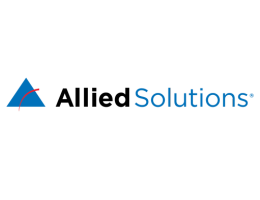In today’s economy, the efficiency of recovery efforts is affected by many factors—from compliance and regulatory changes to consumer trends and lending preferences.
Specifically, impacts of the pandemic, such as the increase in remote work (affecting borrower and collateral locations) and the rebound from repossession moratoriums, are causing credit unions to pivot and reevaluate their risk management strategies. To maximize risk mitigation, it’s important to have strategies for both collateral and monetary recoveries.
Challenges for Collateral Recoveries
Physical collateral recovery was impacted by the pandemic when repossessions faced moratoriums. As activity picks back up, many credit unions (and their vendors) are facing a backlog of collateral recovery, and recovery resources are becoming scarce. Many borrowers have shifted to working in remote locations and while this has reduced traffic and potentially claims, it has also resulted in collateral not residing at the address on file. Some important collateral recovery solutions to consider include repossession and remarketing. Using a third-party provider for these services gives credit unions access to a nationwide network of agents, and helps credit unions of all sizes improve collateral recovery results.
Challenges for Monetary Recoveries
The recovery of dollars on delinquent accounts is just as important as the recovery of physical collateral.
While collection moratoriums, forgiveness programs, and stimulus payments helped carry Americans through the pandemic, many are still experiencing financial instability. Keeping in mind your members’ financial situations, while maintaining compliance with delinquency management regulations is a balance. Outsourced collections and remediation for claims and product refunds, are solutions that leverage technology to help respond to these recovery challenges. Solutions such as debt buying can help credit unions monetize debts and gain cash flow for long-term income generating assets.
5 Questions to Ask about your Collateral Risk Program
For holistic collateral risk management in 2022, ask these 5 questions:
- What economic and demographic factors do we need to consider for our risk management program?
40% of Americans experienced a 25% or more decline in income during the COVID-19 pandemic. With prices of housing, fuel, and food increasing, it’s more important now than ever to evaluate your members’ financial standing. Relying on basic data alone, like credit scores, is no longer predictive enough to know a member’s risk profile. Additionally, considering generational behaviors and trends can influence lending decisions and recovery efforts.
- What do the claim trends indicate?
Digging deep into your credit union’s claims reports may be able to help spot trends, such as when and if delinquencies will increase, or if more or less vehicles are being deemed total loss instead of repairable. At Allied Solutions, we have noticed a decrease in claim frequency over the last year and a half. While this is encouraging, we don’t foresee it lasting through 2022.
- What is our game plan for product refund liability and remediation?
Regulation is shifting around cancelled ancillary products and credit unions are increasingly facing litigation for not accepting the responsibility to refund members on cancelled ancillary products on auto loans. Having a product refund process for remediating cancelled ancillary products is imperative in today’s regulatory landscape.
- Is our borrower data aggregated and current?
When it comes to collection and collateral recovery, having the correct member phone number, address, and cosigner info (if applicable) is imperative. For the most efficient recovery activity, data must be up-to-date and accessible across the business. Outdated information can cause inefficiencies, errors, and borrower frustration. A data warehouse can aggregate data across the organization to ensure that it is current and accurate. With an advanced data warehouse, additional portfolio analytics, such as spending habits and payment trends, are available to help with risk modeling and forecasting.
- How can we leverage technology to optimize recoveries?
Recovery-specific technology can help monitor high risk members. For example, license plate recognition (LPR) combines a database of license plates with camera recognition technology that can be used to gain contact information and addresses. Additionally, our experience shows that the implementation of artificial intelligence in member service can contribute to a 200% increase in debt collection rates.
To reduce losses, lenders must continue to be long-sighted and proactively look for opportunities to manage risk. This is especially important for auto portfolios. Asking these questions of your current risk management program can help identify holes of inefficiency and opportunities for outsourced solutions. Now more than ever a suite of collateral recovery solutions is needed to improve risk management and recovery.
[1] JD Power. 2020. Auto Industry Impact Report.








